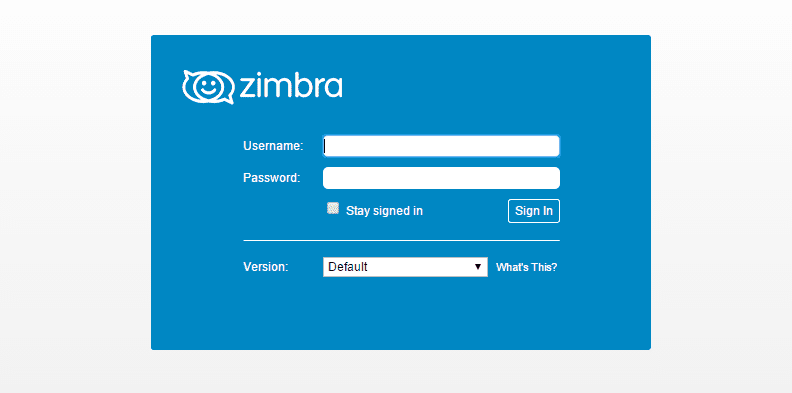
Zimbra is a open source suite providing productivity tools very interesting and powerful, combined in a very complete and simple to use product. It is based on several open source projects as MySQL, Postfix, OpenLDAP, Lucene, nginx and others, and is made up of several proprietary apps, among which we can mention an email client based on Ajax, an antivirus and antispam tool, and a collaborative work panel that also provides us with the possibility of working transparently from any device (being able, for example, to start working on a tablet and switch to a laptop, etc).
Due precisely to the fact of being from open source, and in addition to its flexibility and the relatively simple installation and maintenance, it is widely used in all types of environments, from educational (schools, universities, academies) to business, and of course we can also implement it in all types of projects so we'll see how to install Zimbra Collaboration Server on Ubuntu Server.
For which we simply need a computer that has the server variant of the Canonical distro (14.10 or 15.04) installed, 25 GB of disk space and at least 4 GB of RAM, and for the rest of the tutorial we are going to assume that the IP address of our server is 192.168.1.100 and the domain is "server.local". So we start by installing some essential packages for our purpose:
# apt-get install libgmp10 libperl5.18 unzip pax sysstat sqlite3 dnsmasq wget
Now we configure dnsmasq so that our nameserver is mail.server.local:
# nano / etc / hostname
We add the text:
mail.server.local
We do the same with the / etc / hosts file:
# nano / etc / hosts
We add the following:
192.168.1.100 mail.server.local mail
Then it's time to edit the dnsmasq configuration file:
# nano /etc/dnsmasq.com
We leave the following fields as we show it here:
server = 192.168.1.100
domain = server.local
mx-host = server.local, mail.server.local, 5
mx-host = mail.server.local, mail.server.local, 5
listen-address = 127.0.0.1
We save and restart the equipment:
sudo reboot
What follows is to download Zimbra Collaboration Server, for which we use the wget tool, and then we extract it to a local directory and run the installer:
wget https://files.zimbra.com/downloads/8.6.0_GA/zcs-8.6.0_GA_1153.UBUNTU14_64.20141215151116.tgz
tar -xvf zcs-8.6.0_GA_1153.UBUNTU14_64.20141215151116.tgz
cd zcs *
./install.sh
This verifies the basic requirements, both hardware and software (libraries and others) and then asks us if we agree with the license, to which we must agree to continue. Then, we are shown the installation packages of the suite and we must agree in all cases (entering 'Y') except in the case of zimbra-dnscache since we have already used dnsmqasq. We let everything install and then when we are presented with the main configuration menu.
Must configure zimbra-store, for which we enter the number on the right (6) and then option 4 that allows us to set the password. Once we have entered it we press the 'a' to save the changes, and from now on when we want to verify the status of our installation we can enter the command 'zmcontrol status', which will indicate the Zimbra services that are being executed. Now we only have to try enter the Zimbra administration panel from our web browser, for which we write '192.168.1.100:7071' in the address bar, and we enter with the user 'admin' (without the quotes, of course) and the password that we are going to use is the one we have created.
Hello, I followed the procedure to install zimbra and it keeps asking me for dependencies but it doesn't tell me which ones are missing, there are others apart from those listed in the article.